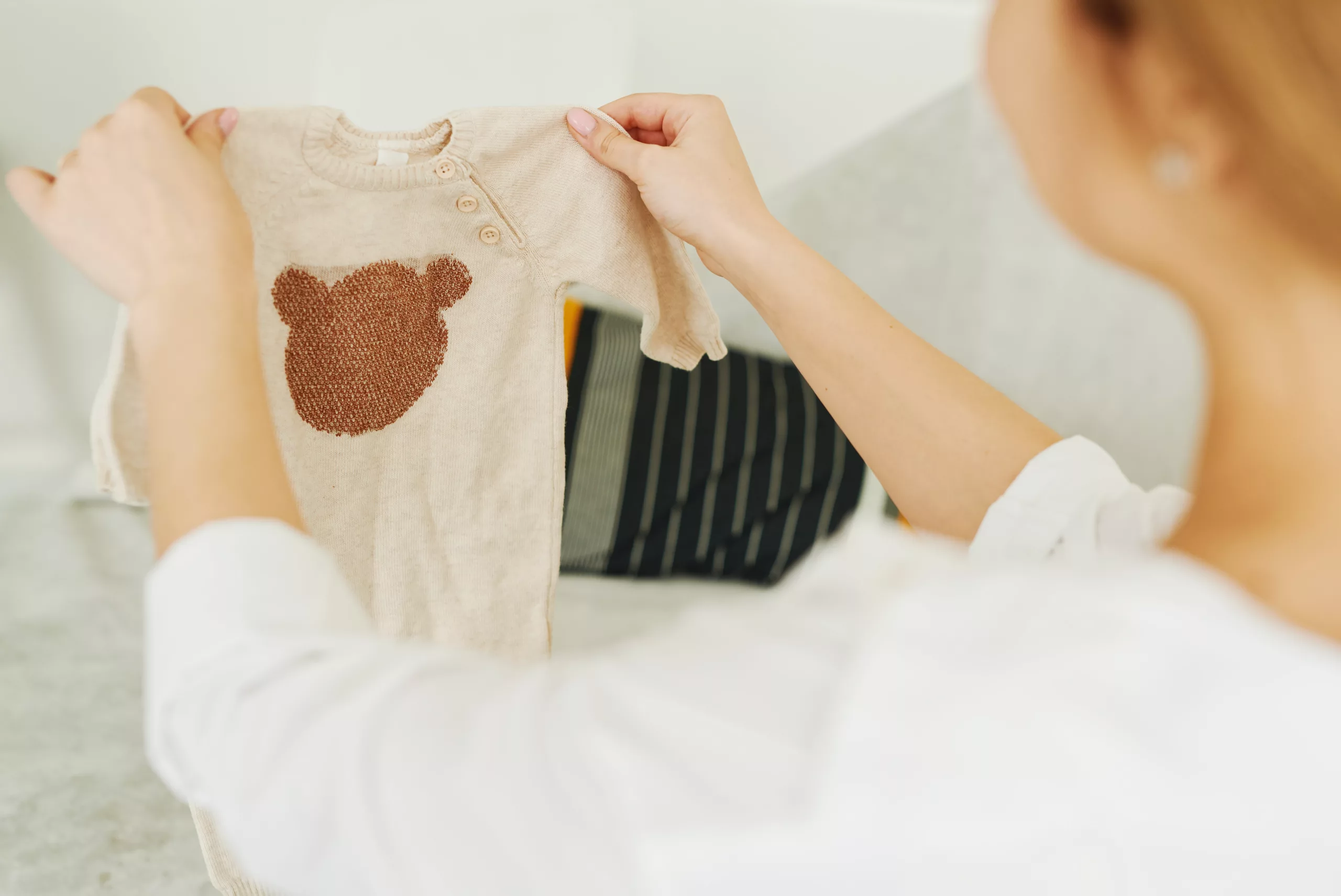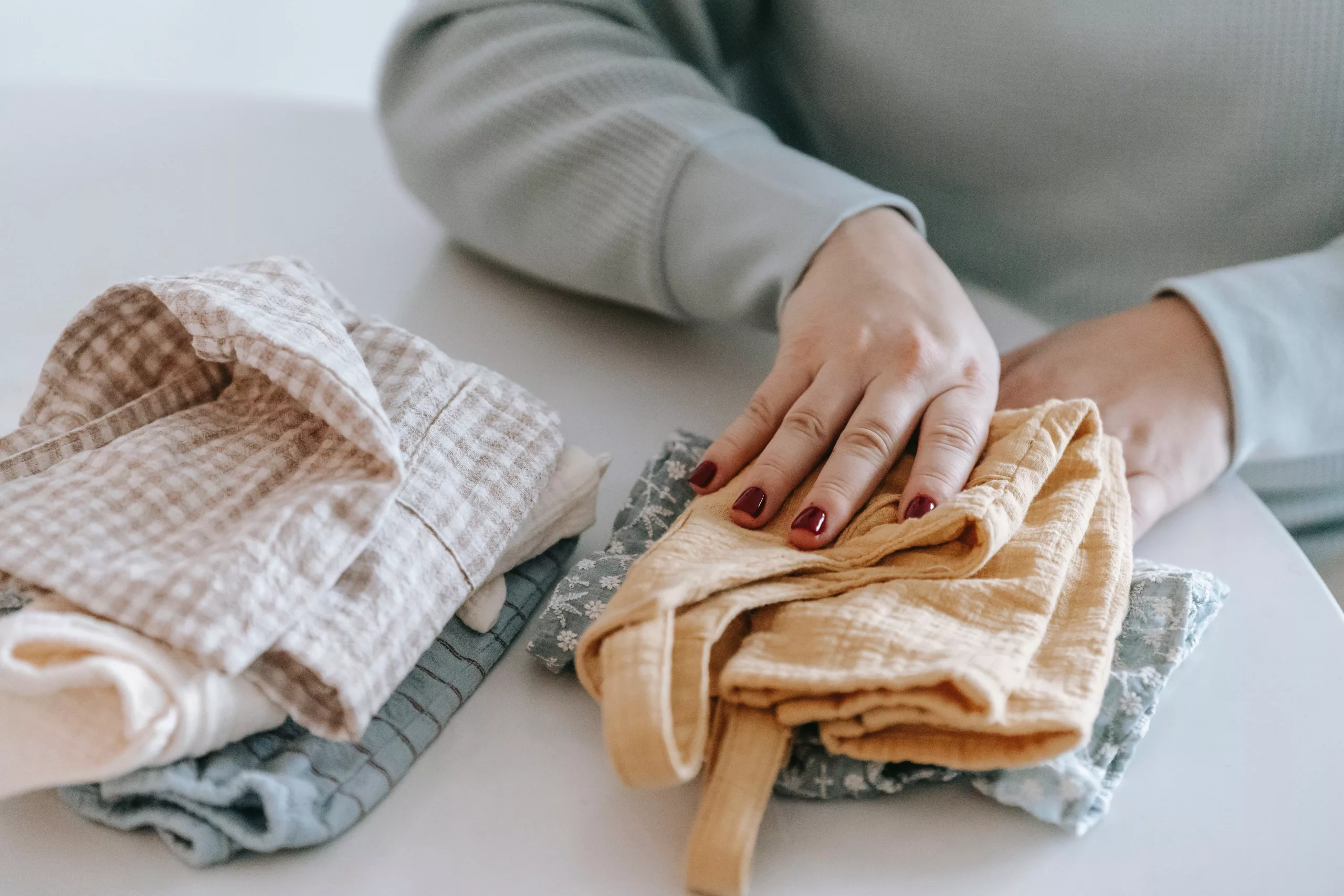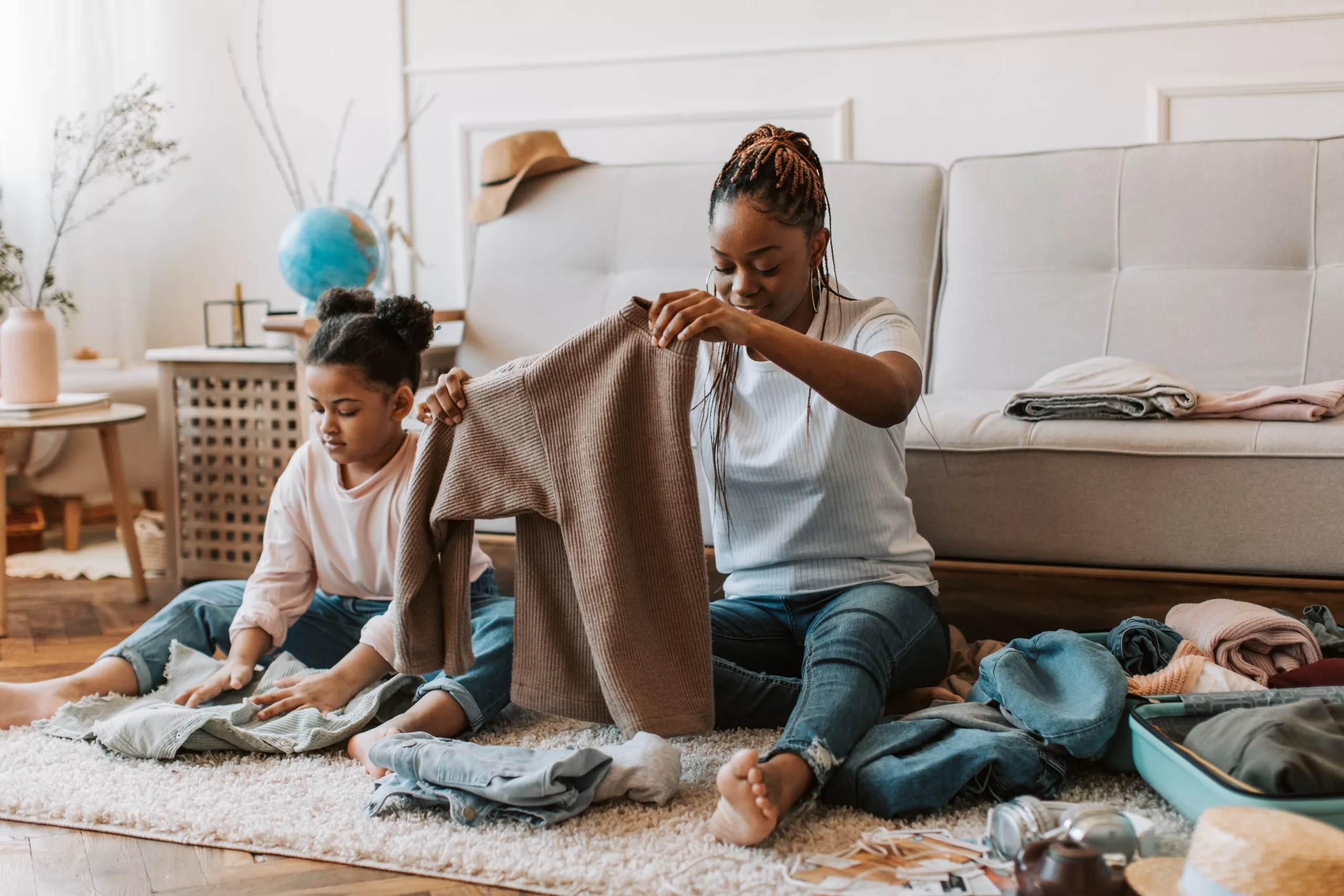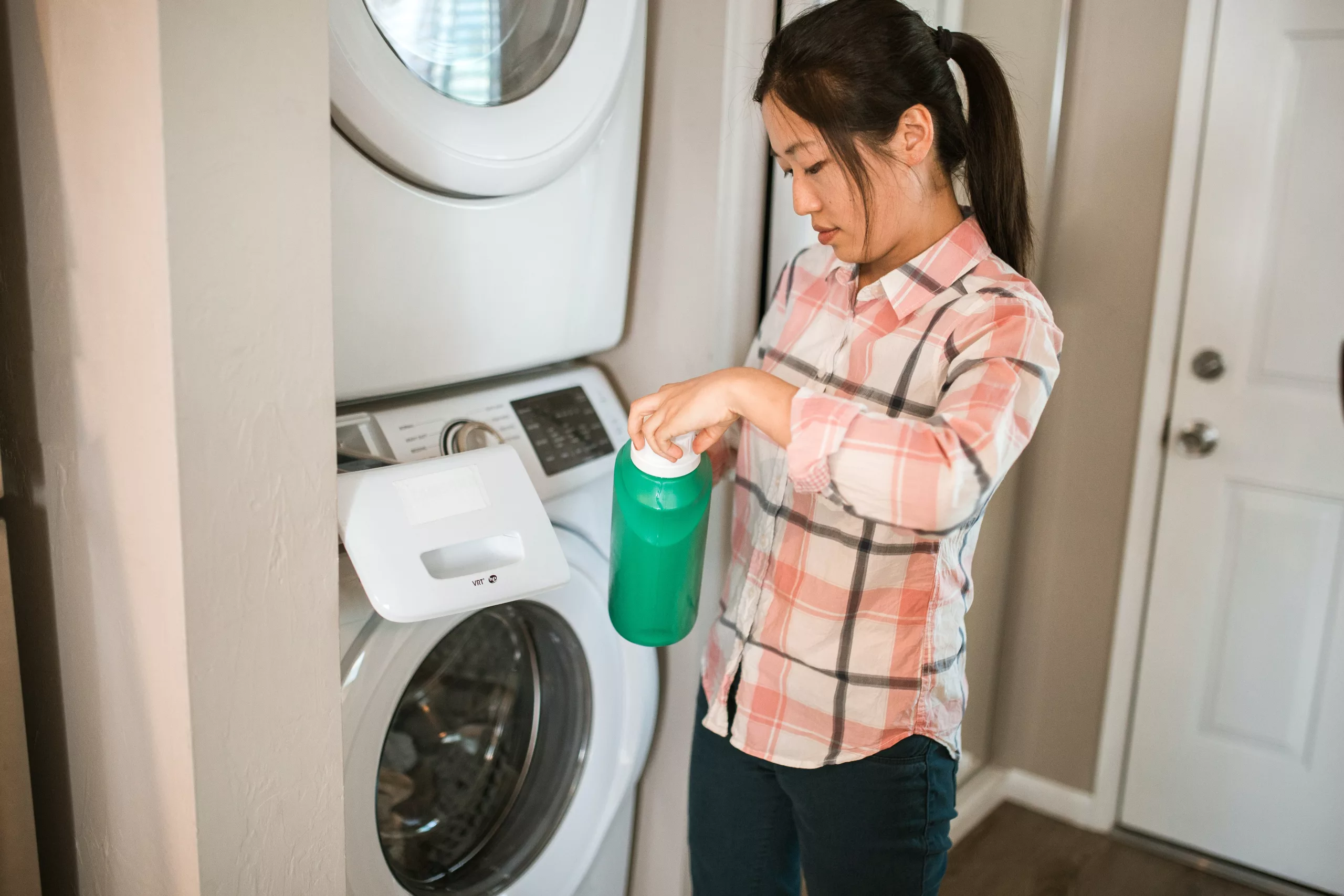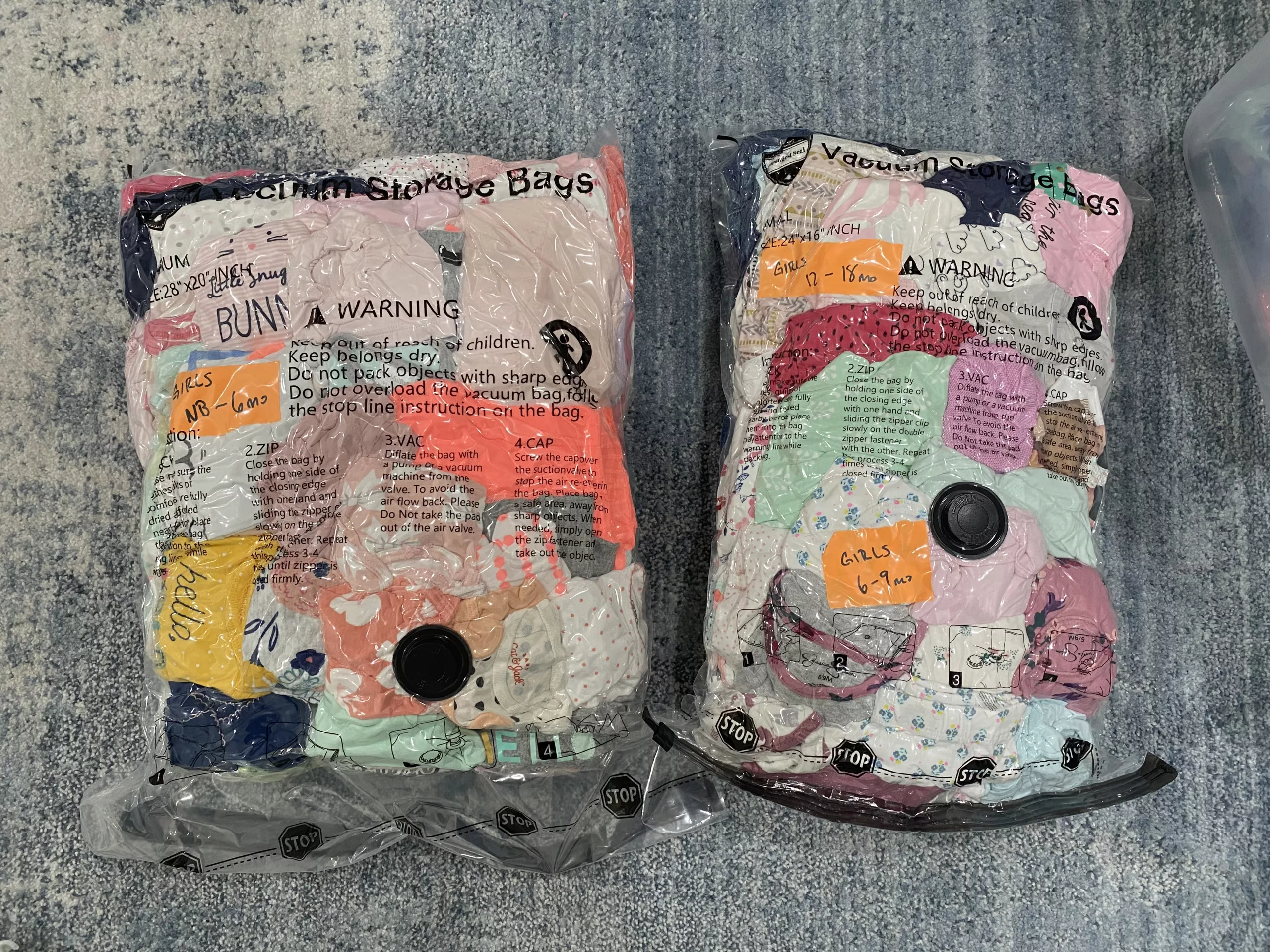During the early years, kids will outgrow their clothes before you’ve even had a chance to move those clothes from the washer to the dryer. Let’s tackle this incredibly common challenge in a way that saves you money and mental energy. While some topics can be useful for older kids, this will mostly address the early years when you’re cycling through tiny wardrobes at a faster rate.
Thoughtful Fabrics
While it’s always fun to buy certain items to celebrate a special moment, the pieces you choose should be meant to last, so knowing quality fabrics and how to care for them will go a long way. If your child tolerates, opt for more shrink resistant man-made fabrics like polyester and nylon, or look for blended fabrics, like polyester-cotton or nylon-wool. Natural fabrics like cotton, wool, hemp and silk feel lovely but have a higher risk for shrinking with heat, moisture, and agitation. Especially with cotton, you will see the majority of shrinkage happen with its first exposure to dryer heat. Spandex and nylon are more elastic, but they can also lose this feature with high heat. No fabric is 100% resistant to shrinkage, so pay attention to the cleaning label.
Pro tips:
- Low temp, low tumble, or air dry are the way to go.
- Always size up!
- If it’s not stained or smelly, consider re-wearing before washing.
- Avoid excessive embellishments that tend to easily fall apart.
Versatility
Matching is subjective. My 5 year old will strongly argue her flared 70s flower pants match with everything. Find colors and patterns that you feel can be stretched into YOUR kids’ wardrobes. If your child has a preference to certain colors, pick staple pieces that can complement that preference. As your child grows, you learn their style. For example, my daughter hates jeans, so we are stocked on solid color leggings to match her more playful tops.
When it comes to newborns and infants, these pieces are so short lived. Go for neutral patterns, styles, and colors that you feel you could dress any future kiddos in, boy or girl. The more complicated an outfit is to put on, the less likely you will put your child in it. So save your money and go for that zipper pajama.
Pro tips:
- Know an expecting mom? Consider gifting clothes in the 6-12 month range, rather than newborn. The less “specific” the outfit, the better use it will get.
- Adjustable buckles and buttons can extend the life of many pants, overalls, and even pajamas.
- Pants with a cinched cuff {jogger style} won’t drag and allow for sizing up {assuming the waist has a drawstring}.
Prevention
Prevention can go a long way in helping tiny wardrobes stand the test of {play}time. Like mentioned before, if the item is not overtly soiled or smells, fold it back up for a second wear. When you do get the inevitable stain, act fast to prevent long term damage. Keep a quality stain remover on hand. Consider having both an on-the-go spot stick, as well as a stain fighting spray to soak the fabric before washing. A staple in our house during the newborn period was a wash basin with a stain removing spray and cleaning brush for those dreaded blowouts.
Pro tips:
- Dedicate certain clothes for school or play, as this is where the biggest wear and tear happens.
- Use bibs for your fun and messy toddler learning to eat and aprons for your paint-loving preschoolers.
- Rotate clothing in the closet or dresser to make less worn clothes more visible and prevent the “favorites” from being over worn.
Organization of Tiny Wardrobes
If you feel you may use your child’s clothes again in the future, taking the time to set up an organization system early on will make life easier when it’s time to pull those clothes out again. Let’s break this down:
Step 1: Every 6 months {or every 3 months if under age 1}, sort through clothes that no longer fit {don’t pay attention to size on the label} and separate.
Step 2: Decide which clothes are keepers, which you plan to donate, and which are unsalvageable {you know what this looks like} and should be tossed.
Step 3: For the keepers, organize by size {and gender, if this matters to you}. You can further subcategorize by tops, bottoms, accessories, outerwear, pajamas, holidays, etc.
Step 4: Contain by category. I strongly recommend all clothes be cleaned, dried, and folded before storing, to prevent fabric damage. Place clothes in zipper bags, or better yet vacuum storage bags for more space saving. This helps preserve fabrics from environmental or pest damage. Contain these bags within a larger storage box.
Step 5: Don’t forget to label, label, label. Why waste time later looking at each individual tag, when you’ve already taken the time to group them now? If you store a large amount of clothes in a deep bag, put the biggest size in the back, since you will likely need smaller sizes first when re-starting a wardrobe for your next child.
You may find as your collection of clothes grows larger with time {or maybe just the sentimental value of certain items grows smaller} you want to revisit the collection and purge through. Having the clothes already organized by category will make finding items you want to gift to a friend or bring out for a yard sale a lot easier. If you keep a consistent routine when it comes to sorting your clothes, it will be much easier to be aware when your child is in need of new clothes and avoid clutter in the closet.
Despite knowing how fast kids grow, the constant cycling through clothes can be an unexpected source of stress for many moms. Using these tips, hopefully you can find ways to make those dollars spent stretch a little longer. Investing in a good organization system will pay dividends in relieving just a small bit of that mama mental load.
Do you have any life hacks for making your kid’s clothes last? Share YOUR pro-tips and let us know what systems for tiny wardrobes have worked for you!








